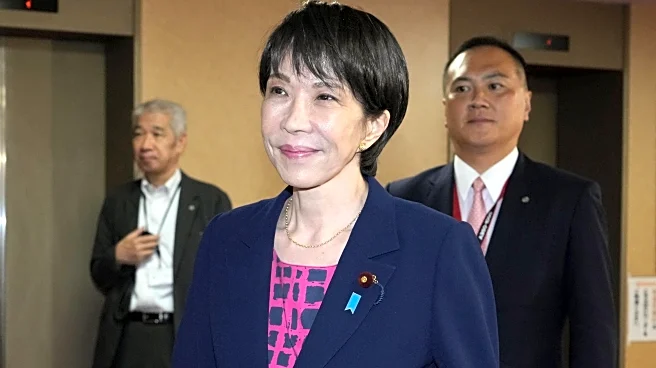What's Happening?
Japan's parliament has elected Sanae Takaichi as the country's first female prime minister, marking a historic moment in Japanese politics. Takaichi, who secured a majority in both the Lower and Upper
Houses, is leading the ruling Liberal Democratic Party. Her appointment includes Japan's first female finance minister, Satsuki Katayama, and other key figures. This development is seen as a significant step towards gender equality in leadership roles within Japan, a country traditionally dominated by male leaders.
Why It's Important?
Takaichi's election is a pivotal moment for gender representation in Japan, potentially influencing other nations to follow suit. It highlights the importance of cultural transformation in achieving genuine progress in gender equality. Her leadership could inspire changes in organizational cultures, encouraging more inclusive practices and policies. This shift may also impact HR strategies globally, as companies look to support diverse leadership and address gender disparities.
What's Next?
Takaichi's leadership will likely focus on fostering gender equality within the government and beyond. Organizations may need to reassess their policies to ensure they support female leaders effectively. This could involve implementing structured sponsorship programs and addressing biases in feedback and promotion processes. The broader impact may include increased advocacy for women's rights and leadership opportunities in various sectors.
Beyond the Headlines
The election of a female prime minister in Japan challenges long-standing cultural norms and could lead to broader societal changes. It raises questions about the role of women in leadership and the systemic barriers they face. The event may inspire discussions on the importance of representation and the need for intentional systems to support gender parity.













